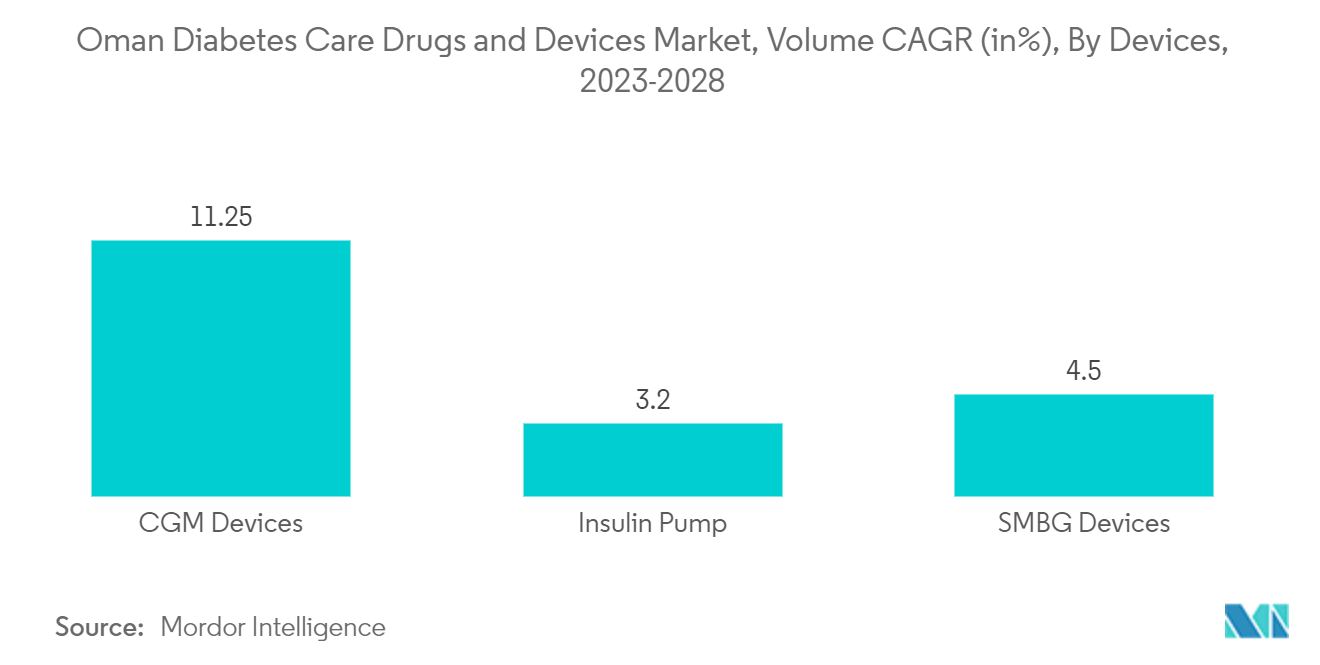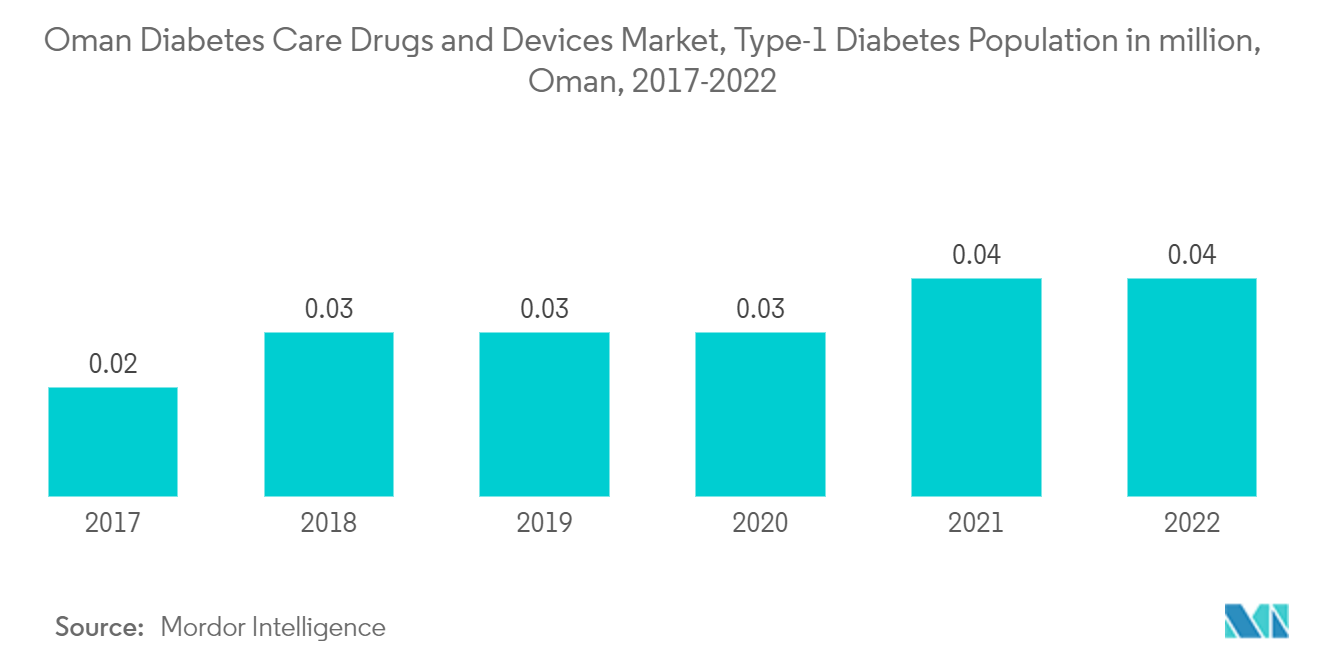Market Trends of Oman Diabetes Drugs And Devices Industry
The continuous Glucose Monitoring Segment is Expected to Witness the Highest Growth Rate Over the Forecast Period
In CGM, a small sensor is inserted into the abdomen or arm, and a small plastic tube called a cannula is inserted into the top layer of skin. An adhesive patch holds the sensor in place, allowing it to measure glucose levels in interstitial fluid day and night. In general, the sensor should be replaced every 7-14 days. A small, reusable transmitter attached to the sensor allows the system to wirelessly transmit real-time readings to a monitor displaying blood glucose data. Some systems have their monitors, while others display information via smartphone apps.
The frequency of monitoring blood glucose levels depends on the type of diabetes and is different for each patient. People with type 1 diabetes should have their blood sugar checked regularly, monitor their blood sugar levels, and adjust their insulin dosage accordingly. His CGM device now details blood glucose patterns and trends compared to routine blood glucose monitoring at set intervals. In addition, current continuous blood glucose monitors can retroactively check blood glucose trends by downloading data or providing real-time images of blood glucose levels via the receiver display.
Continuous glucose monitoring sensors use glucose oxidase to measure blood sugar levels. Glucose oxidase converts glucose to hydrogen peroxidase, which reacts with platinum in the sensor to send an electrical signal to a transmitter. The sensor is the most important part of any continuous blood glucose monitoring device. Technological advances in improving sensor accuracy are expected to drive the growth of the segment during the forecast period.

Rising diabetes prevalence in Oman driving the market in the forecast year
According to the Oman Diabetes Association, diabetes is an expensive chronic disease requiring blood sugar level control. This poses a challenge for low-income and social security patients, and efforts are being made to reduce the burden on these patients and promote carbohydrate restriction. In addition, there are about 60 new pediatric infections per year. According to local studies and reports of good diabetes control, the rate is 32-35% in adult patients but reaches 10-12% in children and adolescents. Governments are committed to raising awareness of diabetes and increasing access to medicines to improve diabetes management.
Diabetes shortens life, and people with the disease are more likely to go blind and be hospitalized for amputations, kidney failure, heart attack, stroke, and heart failure. Metformin is the first-line treatment for hyperglycemia in T2DM. Metformin is not only an essential hypoglycemic agent but also has important anti-inflammatory properties. Other options should be considered if metformin is contraindicated or not tolerated or if treatment goals are not achieved after three months of maximum tolerated dose. Dipeptidyl peptidase four inhibitors, sodium glucose cotransporter two inhibitors, and glucagon-like peptide one agonist are commonly used as adjuncts to metformin treatment.
The Ministry of Health, Oman is strategically planning to contain the growing burden of diabetes and invest in all means to control it, stating that their work needs to ensure equitable and affordable access to treatment, and it is essential that they advocate for investments in diabetes education and prevention programs in Oman. Risk factors such as insufficient physical activity and the consumption of unhealthy diets are contributing to the development and progression of the disease.
The increasing diabetes prevalence and the above factors will likely drive segment growth over the forecast period.


